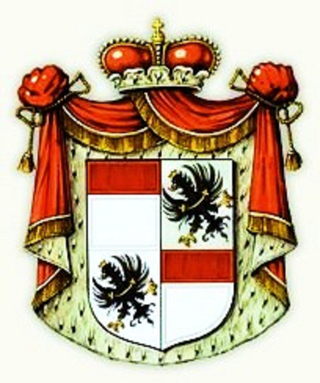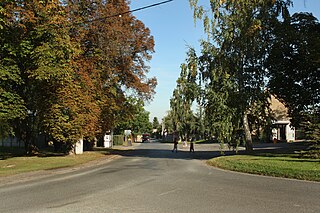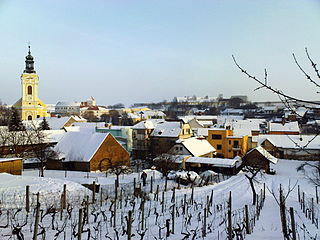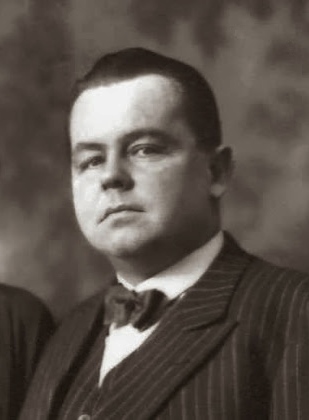
The Czechs, or the Czech people, are a West Slavic ethnic group and a nation native to the Czech Republic in Central Europe, who share a common ancestry, culture, history, and the Czech language.

The House of Kinsky is a prominent Bohemian noble family originating in the Kingdom of Bohemia. During the Thirty Years' War, the Kinsky family rose from minor nobles to comital rank (1628) and later princely status (1747) under the rule of the Habsburgs. The family, recorded in the Almanach de Gotha, is considered to have been one of the most illustrious of Austria-Hungary.

The House of Lobkowicz is an important Bohemian noble family that dates back to the 14th century and is one of the oldest noble families of the region. Over the centuries, the family expanded their possessions through marriage with the most powerful families of the region, which resulted in gaining vast territories all across central Europe. Due to that, the family was also incorporated into the German, Austrian and Belgian nobility.
Czech nobility consists of the noble families from historical Czech lands, especially in their narrow sense, i.e. nobility of Bohemia proper, Moravia and Austrian Silesia – whether these families originated from those countries or moved into them through the centuries. These are connected with the history of Great Moravia, Duchy of Bohemia, later Kingdom of Bohemia, Margraviate of Moravia, the Duchies of Silesia and the Crown of Bohemia, the constitutional predecessor state of the modern-day Czech Republic.

The House of Colloredo-Mansfeld is an originally Italian noble family of which a branch came to Austria in the late 16th century. There they were raised to barons in 1588, imperial counts in 1727 and imperial princes in 1763. They obtained Opočno Castle in the Kingdom of Bohemia in 1634 and acquired numerous further estates in Bohemia and Austria. In 1945 they were expropriated and expelled from the Czechoslovak Republic, but returned after 1990 and had parts of their former estates restituted.

Postoloprty is a town in Louny District in the Ústí nad Labem Region of the Czech Republic. It has about 4,700 inhabitants.

The House of Liechtenstein, from which the principality takes its name, is the family which reigns by hereditary right over the principality of Liechtenstein. Only dynastic members of the family are eligible to inherit the throne. The dynasty's membership, rights and responsibilities are defined by a law of the family, which is enforced by the reigning prince and may be altered by vote among the family's dynasts, but which may not be altered by the Government or Parliament of Liechtenstein.

The House of Schwarzenberg is a German (Franconian) and Czech (Bohemian) aristocratic family, formerly one of the most prominent European noble houses. The Schwarzenbergs are members of the German and Czech nobility, and they once held the rank of Princes of the Holy Roman Empire. The family belongs to the high nobility and traces its roots to the Lords of Seinsheim during the Middle Ages. The secundogeniture branch of the Schwarzenbergs was among the foremost Czech patriotic houses.

Pivovar Eggenberg is a brewery in Český Krumlov, Czech Republic.

Troja Palace is a Baroque palace located in Troja, Prague's north-west borough. It was built for the Counts of Sternberg from 1679 to 1691. The palace is owned by the city of Prague and hosts the 19th century Czech art collections of the City Gallery.

Hluboká Castle is a historic château situated in Hluboká nad Vltavou. It is considered one of the most beautiful castles in the Czech Republic.
The Czech branch of the House of Thurn and Taxis is a dynastic cadet branch of the Princely House of Thurn and Taxis, a German noble family that was a key player in the postal services in Europe in the 16th century and became well known as the owner of breweries and builder of many castles.

The House of Waldstein or House of Valdštejn is a Bohemian noble family that originated from the Kingdom of Bohemia as a branch of the Markwartinger family and gained prominence during the reign of the Přemyslid dynasty. The house was founded by Jaroslav of Hruštice (1234–1269) and named after Valdštejn Castle near Turnov in northern Bohemia. The family's most prominent members include Albrecht von Wallenstein, the Imperial general during the Thirty Years' War, and Ferdinand Ernst von Waldstein, a statesman and early patron of Ludwig van Beethoven.

Škvorec Chateau is a chateau, formerly a minor castle, located in Škvorec in the Central Bohemian Region of the Czech Republic, about 23 kilometres (14 mi) east of Prague. The chateau, locally also known as the Starý zámek, was indirectly first mentioned in historical sources in 1279, yet fully documented as late as since 1404. This Gothic castle was rebuilt during the 1520s into a Renaissance palace; but in 1639 – during the devastating Thirty Years' War – the premises were looted, burned and until 1710 laid in ruins. The chateau was restored then, this time in the Baroque style. Between 1860 and 1884 most of the compound was demolished, leaving only the buildings in south-eastern corner.

Panenské Břežany is a municipality and village in Prague-East District in the Central Bohemian Region of the Czech Republic. It has about 700 inhabitants.

Čejkovice is a municipality and village in Hodonín District in the South Moravian Region of the Czech Republic. It has about 2,400 inhabitants.

Adolph Schwarzenberg was a notable landowner, entrepreneur and philanthropist. He was the eldest son of Johann and Therese Schwarzenberg, née Trauttmansdorff-Weinsberg. An outspoken opponent of the Nazi regime, his properties were seized by the German Reich and by Third Czechoslovak Republic shortly before the Communist coup of 1948.

Orlík Castle is a château 500 metres (1,600 ft) in Orlík nad Vltavou, in Písek District in the South Bohemian Region of the Czech Republic. The original position of the spur castle, on a rock 60 metres (200 ft) above the Vltava valley, was altered by the creation of the Orlík Reservoir in 1954–62, and the chateâu is now barely a few metres above the water level.

Sirotčí hrádek is a ruin of a Gothic castle in the municipality Klentnice in the South Moravian Region of the Czech Republic. The origins of the castle date back to the 13th century, when it was built by the Wehingen family; the castle then belonged to the Liechtensteins and the Dietrichsteins, before being abandoned in the 16th century. It has been protected as a cultural monument since 1958.

Ostrov Castle is a castle in Ostrov in the Karlovy Vary Region of the Czech Republic. It dates back to the 15th century, but has been reconstructed into baroque palace with gardens under the Saxe-Lauenburg and Baden-Baden families. In the 19th century, it belonged to the Tuscan branch of Habsburg family. Nowadays, it houses municipal offices, a library, a gallery and museum. Its gardens were once considered the most famous of Bohemia.
































